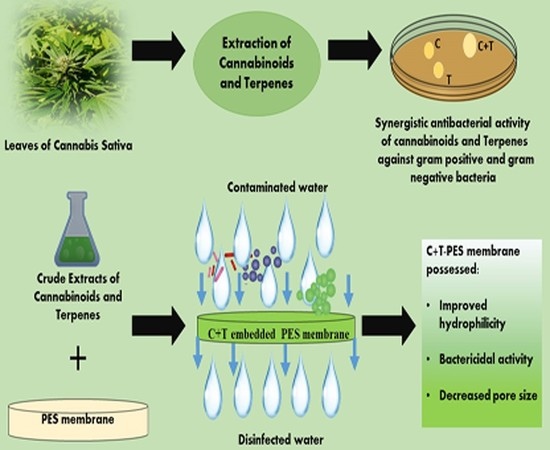 “Dental plaque is a complex biofilm that gets formed on the teeth and acts as a reservoir of different microbes. It is the root cause for the occurrence of several dental problems and diseases, including cavities, bad breath, bleeding gums, tooth decay, and tooth loss. Therefore, it should be regularly removed using suitable oral care aids.
“Dental plaque is a complex biofilm that gets formed on the teeth and acts as a reservoir of different microbes. It is the root cause for the occurrence of several dental problems and diseases, including cavities, bad breath, bleeding gums, tooth decay, and tooth loss. Therefore, it should be regularly removed using suitable oral care aids.
The present study compared the efficacy of oral care products and cannabinoids in reducing the bacterial content of dental plaques.
Sixty adults aged 18 to 45 years were categorized into six groups based on the Dutch periodontal screening index. Dental plaques of the adults were collected using paro-toothpick sticks and spread on two Petri dishes, each with four divisions. On Petri dish-A, cannabidiol (CBD), cannabichromene (CBC), cannabinol (CBN), and cannabigerol (CBG) were used, and on Petri dish-B, cannabigerolic acid (CBGA), Oral B, Colgate, and Cannabite F (a toothpaste formulation of pomegranate and algae) were used. The Petri dishes were sealed and incubated, followed by counting the number of colonies.
Results: By evaluating the colony count of the dental bacteria isolated from six groups, it was found that cannabinoids were more effective in reducing the bacterial colony count in dental plaques as compared to the well-established synthetic oral care products such as Oral B and Colgate.
Conclusion: Cannabinoids have the potential to be used as an effective antibacterial agent against dental plaque-associated bacteria. Moreover, it provides a safer alternative for synthetic antibiotics to reduce the development of drug resistance.”
https://www.ncbi.nlm.nih.gov/pubmed/32038896
“To the best of our knowledge, no such study has been published that compares the efficiency of cannabinoids with that of oral care products against dental bacteria. Our study is the first of its kind conducted to compare the efficacy of well-established commercial oral care products and cannabinoids in reducing the bacterial content of the dental plaque. Reducing the bacterial content could significantly decrease and prevent gum diseases that have become a huge global burden owing to their direct relation with systemic diseases. Here we report a preliminary observatory study on effect of cannabinoids on reducing the bacterial content of dental plaque.”
https://www.cureus.com/articles/25300-comparison-of-efficacy-of-cannabinoids-versus-commercial-oral-care-products-in-reducing-bacterial-content-from-dental-plaque-a-preliminary-observation
 “Plant phytochemicals have potential decontaminating properties, however, their role in the amelioration of hydrophobic water filtration membranes have not been elucidated yet.
“Plant phytochemicals have potential decontaminating properties, however, their role in the amelioration of hydrophobic water filtration membranes have not been elucidated yet.

 “Novel anticancer medicines, including targeted therapies and immune checkpoint inhibitors, have greatly improved the management of cancers. However, both conventional and new anticancer treatments induce cardiac adverse effects, which remain a critical issue in clinic.
“Novel anticancer medicines, including targeted therapies and immune checkpoint inhibitors, have greatly improved the management of cancers. However, both conventional and new anticancer treatments induce cardiac adverse effects, which remain a critical issue in clinic. “Dental plaque is a complex biofilm that gets formed on the teeth and acts as a reservoir of different microbes. It is the root cause for the occurrence of several dental problems and diseases, including cavities, bad breath, bleeding gums, tooth decay, and tooth loss. Therefore, it should be regularly removed using suitable oral care aids.
“Dental plaque is a complex biofilm that gets formed on the teeth and acts as a reservoir of different microbes. It is the root cause for the occurrence of several dental problems and diseases, including cavities, bad breath, bleeding gums, tooth decay, and tooth loss. Therefore, it should be regularly removed using suitable oral care aids. “The rationale of this study was to assess occurrence of withdrawal symptoms induced by abrupt cessation of cannabidiol (CBD) after prolonged administration in healthy volunteers.
“The rationale of this study was to assess occurrence of withdrawal symptoms induced by abrupt cessation of cannabidiol (CBD) after prolonged administration in healthy volunteers. “Neuropsychiatric disorders, such as addiction, are associated with cognitive impairment, including learning and memory deficits.
“Neuropsychiatric disorders, such as addiction, are associated with cognitive impairment, including learning and memory deficits. “The use of medical cannabis in children is rapidly growing.
“The use of medical cannabis in children is rapidly growing.